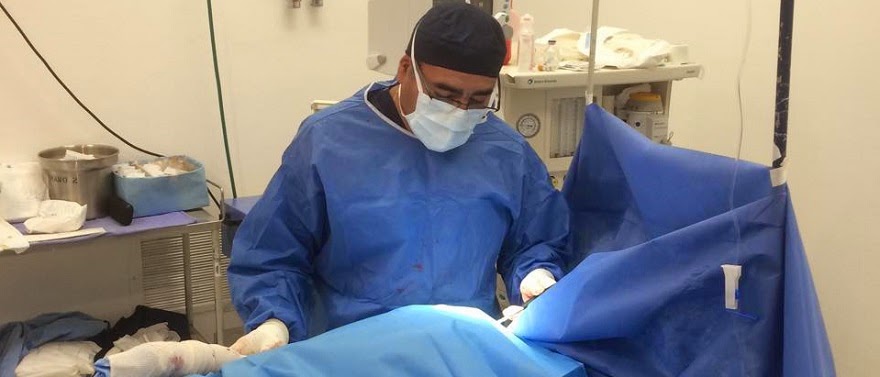“XVII CURSO
PEDI@TIPS ORTOPEDICOS”
Objetivo: “REVISAR LA PATOLOGÍA ORTOPÉDICA
MÁS COMÚN EN EL NIÑO CON UNA VISIÓN PREVENTIVA, INTEGRAL E INTERDISCIPLINARIA”.
Sede: AUDITORIO PRINCIPAL DE LA UNIDAD DE
CONGRESOS DEL INSTITUTO NACIONAL DE PEDIATRIA.
FECHA: 15, 16 Y 17 DE JUNIO 2015. HORARIO: 8:00 A 14:00 HRS.
DIRIGIDO A: PEDIATRAS, ORTOPEDISTAS,
REHABILITADORES, MÉDICOS GENERALES, ENFERMERAS, TRABAJADORAS SOCIALES.
COSTO: $ 1,000.00 M.N.
DR. JOSÉ CORTÉS
GÓMEZ
COORDINADOR
GENERAL
LUNES 15 JUNIO
8:00 – 8:30 INSCRIPCIONES
8:30 – 9:00 EVALUACIÓN INICIAL
9:00 – 9:30 MEDICINA DEFENSIVA EN PEDIATRÍA
DR. IGNACIO MORA MAGAÑA, INP
9:30 – 10:00 EFECTOS DEL SOBREPESO EN LOS NIÑOS Y
ADOLESCENTES
DR. ARAMIZ LÓPEZ DURÁN, INP
10:00 – 10:30 POSTURA Y DEFECTOS POSTURALES EN EL NIÑO
DR. GUSTAVO LEGORRETA
CUEVAS, HOSP. SHINNER´S
10:30 – 11:00 RECESO
11:00 – 11:30 INAUGURACIÓN
11:30 – 12:00 EJERCICIO Y LESIONES DEPORTIVAS EN EL NIÑO
DR. GUILLERMO GARCÍA PINTO,
HOSP. EDO. MAYOR PRESIDENCIAL
12:00 – 12:30 CUÁLES SON LAS CINCO FRACTURAS MÁS COMÚNES
EN EL NIÑO?
DRA. KARLA BELLO MELCHOR,
HOSP. PEDIÁTRICO ARAGÓN
12:30 – 13:00 ACORTAMIENTOS EN LAS EXTREMIDADES DE APOYO
DR. VÍCTOR HUGO LÓPEZ
GARCÍA, HOSP. NIÑO TAMPICO, TAMAULIPAS
13:00 – 13:30 PATOLOGÍA DEL PIE EN EL NIÑO
DR. RAÚL JIMÉNEZ GÓMEZ,
HOSP. DEL NIÑO, TUXTLA GUTIÉRREZ, CHIAPAS
13:30 – 14:00 OSTEOCONDRITIS
DRA. LORENA CRÚZ HERNÁNDEZ,
INP
MARTES 16 DE JUNIO
8:00
- 8:30 ESCOLIOSIS TIPOS Y DIAGNÓSTICO TEMPRANO
DR. LUIS DOMINGO MIRANDA
PICHARDO, INP
8:30
- 9:00 DESLIZAMIENTO CAPITAL FEMORAL
DR. 0SCAR DANIEL ISUNZA, INP
9:00
- 10:00 TRASTORNOS DEL
MOVIMIENTO
DR. GUILLERMO DÁVILA
GUTIÉRREZ, INP
10:00 – 10:30 MANIFESTACIONES ORTOPÉDICAS EN
ENFERMEDADES INMUNOLÓGICAS
DR. MARCO ANTONIO
YAMAZAKI NAKASHIMADA, INP
10:30 – 11:00 RECESO
11:00 – 11:30 DEFORMIDADES ANGULARES
DR. ALBERTO HARFUSH NASSER, HOSP. SHRINNER´S
11:30 – 12:00 RAQUITISMOS Y ACIDOSIS TUBULAR RENAL
DR. HUANTE, INP
12:00 - 13:00 DISPLASIA DEL DESARROLLO DE LA CADERA
DR. PABLO CASTAÑEDA
LEEDER, HOSP. SHRINNER´S
DR. ANGEL HERNÁNDEZ
CORIA, HOSP. GRAL. DE MÉXICO
DR. DIEGO VANEGAS
GARCÍA, HOSP. INFANTIL EDO. DE MÉXICO
13:00 – 13:30 PEDI@TÍPS EN POLITRAUMA INFANTIL
DR. FLORENTINO OLGUÍN
HERNÁNDEZ, HOSP. PEDIÁTRICO ARAGÓN
13:30 – 14:00 FORMA NUEVAS DE MALTRATO INFANTIL
DR. JORGE TREJO
HERNÁNDEZ, INP
MIÉRCOLES 17 DE
JUNIO
8:00
- 8:30 OSTEOGÉNESIS
IMPERFECTA
DR. JOSÉ ANTONIO
DELGADO, INP
8:30
- 9:00 PARÁLISIS CEREBRAL
INFANTIL
DR. JULIÁN DAVID CORDERO RAMÍREZ, INP
9:00
- 9:30 FRACTURAS EXPUESTAS
EN NIÑOS QUÉ HACER?
DR. SALVADOR RODOLFO
GARNICA RAMÍREZ, HOSP. GRAL. XOCO
9:30
- 10:00 ARTRÍTIS SÉPTICA Y
OSTEOMIELITIS
DRA. KARLA OCHOA
FLORES, HOSP. PEDIÁTRICO ARAGÓN
10:00 – 10:30 MÉTODO PONSETI EN PIE EQUINOVARO
CONGÉNITO
DR. GILBERTO RÍOS RUÍZ,
HOSP. SHRINNER´S
10:30 – 11:00 RECESO
11:00 – 11:30 ENSEÑANDO Y APRENDIENDO ORTOPEDIA,
EXPERIENCIA HOSPITAL SHRINNER´S, CD. DE MÉXICO
DR. FELIPE HACES
GARCÍA, DIRECTOR HOSP. SHRINNER´S, UNIDAD MÉXICO
11:30 – 12:00 MARCHA NORMAL Y PATOLÓGICA EN EL NIÑO.
DR. ENRIQUE ROSALES MUÑÓZ, HOSP.
SHRINNER´S
12:00 – 12:30 “PEQUEÑAS DOSIS, GRANDES INTOXICACIONES”
DR. JORGE OMAR FLORES
DEL RAZO, INP
12:30 – 13:00 CÓMO EVITAR ENFRENTAR UNA DEMANDA
MÉDICO-LEGAL?
LIC. LUCÍA GALVÁN
QUESADA, P.M.L.
13:00 – 13:30 QUO VADIS
DR. OSCAR VÁZQUEZ
TSUJI, INP
13:30 – 14:00 EVALUACIÓN FINAL
ENTREGA DE CONSTANCIAS

